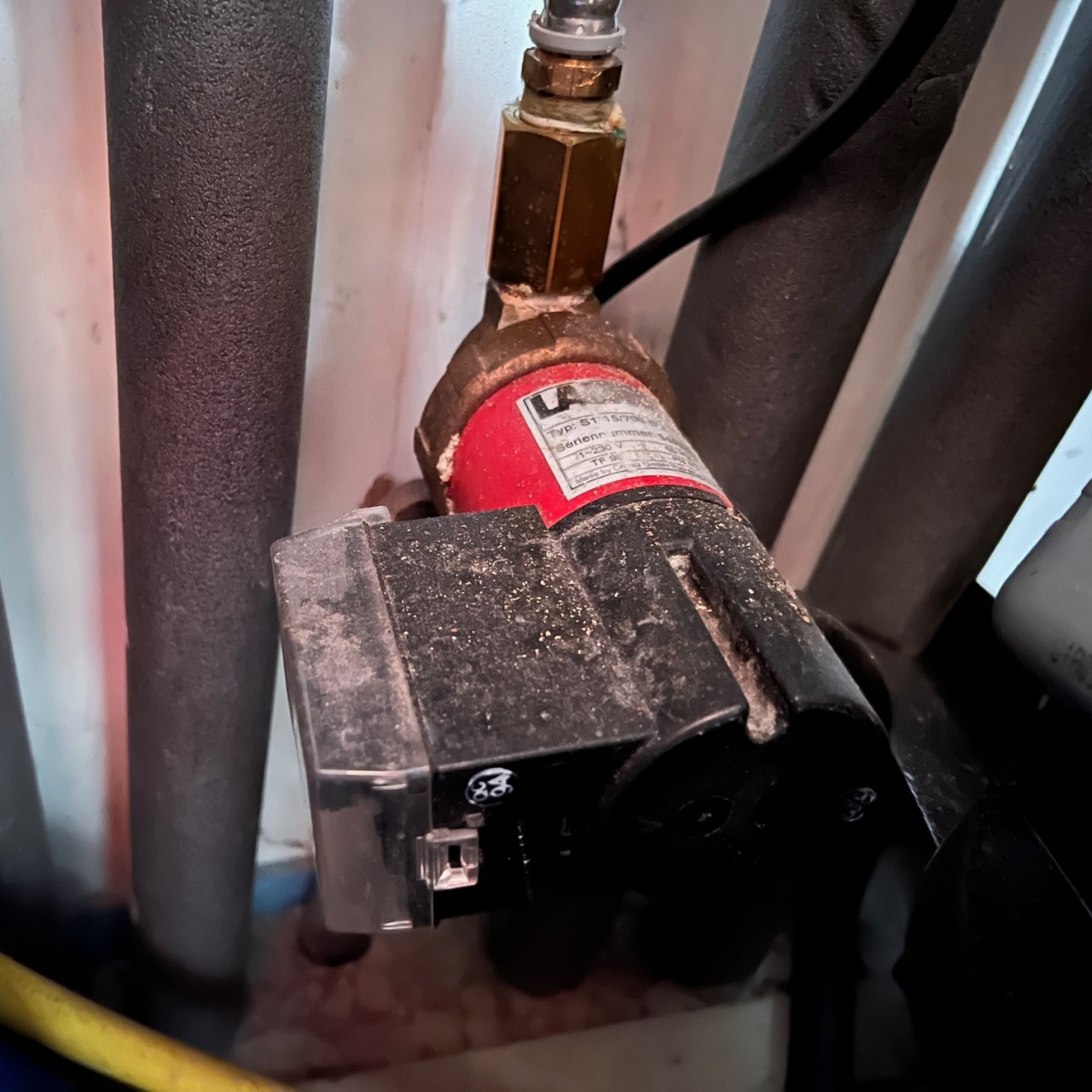Hot water on demand
In the terraced house where we live, there are various taps that produce cold, but also warm water when you open them. Although that with the warm water is not a matter of course. Not only does the cold water have to be heated, it also has to be available at the tap if required.
In older hot water systems, you may have to let the water run for quite a long time. This depends, among other things, on the length of the line between the hot water tank or heat exchanger and the tap. In order to shorten this time, so-called ring mains were built into the houses at some point. The warm water is constantly pumped around. The taps are connected to this ring somewhere. If you open one, warm water comes out more or less immediately. This is of course great and basically saves water. But this luxury costs money: The pump that keeps the water moving needs electricity (about 25 W for us) and the warm water cools down despite the insulation of the pipes, so it has to be heated up again and again. If the pump is not in operation, the water sometimes has to run for several minutes before it warms up. It takes the longest for us in the kitchen.
If you think about when you need hot water in a household with a reasonably regular daily routine, you quickly come up with two typical time frames: in the morning after getting up and in the evening before going to bed. It tends to fray at the weekend, but during the week you can narrow down the time periods relatively closely.
Now the manufacturers of the circulating pumps are not stupid either and add timers to the pumps. Our pump has a mechanical timer that can be programmed in 15-minute increments. That was actually ok for us for an estimated 10 years. The timer on our pump is on the left under the little cover and can only be seen with extreme contortions.
At some point, estimated around 2018, I got annoyed that on weekends, when we like to stay longer, you had to let the water run for a long time until it got warm. I looked at the electrical installation of the pump and noticed that the power for the pump comes from the box with the electronic control of the heater. I pulled the heater plug out of the socket and snapped the cable in half. Then I fitted the ends with a Schuko plug and coupling and then inserted a different programmable electronic timer for each day of the week. Switching between summer and winter time was also much easier. For the next few years, the water supply was solved better, at least as far as availability at the tap was concerned.

In concrete terms, however, the switch-on times were longer than before. Especially with the demand, towards last winter, that energy should be saved (the Klingenberg power plant, which supplies us with district heating, had been converted from (local) lignite (wug) to (Russian) natural gas (kotz) a few years ago), that was what I felt everything is no longer right. Unfortunately I didn’t get any further with the idea of controlling the pump via an Arduino. I was thinking like this:
When you open the hot water tap, the temperature must rise in some line on the heating system, actually directly at the outlet from the heat exchanger. If my clever electronics register a sudden increase in temperature there, the pump should switch itself off for a certain time, e.g. B. switch on for a quarter of an hour. Unfortunately, I didn’t identify any line where the temperature suddenly changed. So I scrapped that idea.
Instead, I got myself a smart socket that I can control via an app. It is now in the same place as the timer before. It then turned out that I also needed an Apple Homepod for my control needs. Now I hope that the standby currents for the outlet and the Homepod do not outweigh the energy savings. Of course, that’s hard to measure. But pump on times are now significantly shorter than ever before. If you z. For example, if you want hot water to brush your teeth in the evening, you can do that with “Hey Siri, turn on the hot water”. If you do this at the beginning of brushing your teeth, you’ll end up with warm water. If you forget to turn on the hot water, you just use cold (or wall-warm) water and save even more energy.
You should remember that you also turn the hot water off again because Siri is unfortunately too stupid for the command “Hey Siri, turn on the hot water for 5 minutes”. To be on the safe side, I set various switch-off points in the app throughout the day. At some point the pump will definitely stop again.

I got gasps recently when we went on vacation and I had the heating set to “permanently lowered”. When I called up the smart home app for other reasons, I saw that the connection in the app to the smart socket no longer existed and I didn’t know whether the pump was now on or off. When I returned from vacation, it turned out that the heating electronics also switched off the power to the pump permanently with “Permanent lowering” and the smart socket was no longer supplied with power. So, all good.
(Markus Winninghoff)
